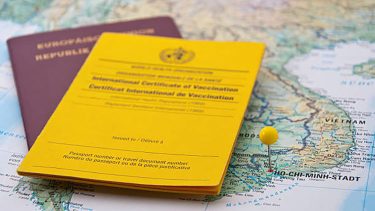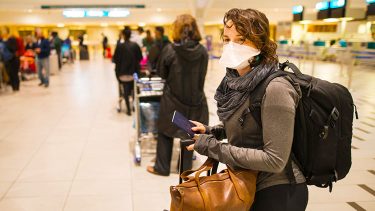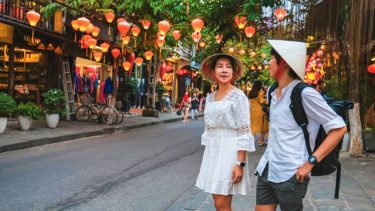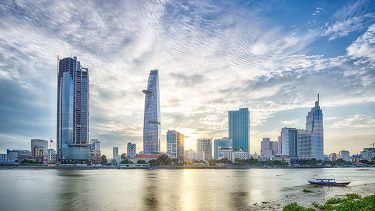Vietnam has been popular with foreign tourists around the world. Therefore, the Vietnam Government has made it easier for foreigners to get Vietnam visas whether they are on a business trip or they visit Vietnam as tourists.
Besides applying to the Vietnam Embassies for Vietnam visas, most foreigners also prefer applying for Visa on Arrival and E-visa. These stand out as the most common types of visa applications. This article will provide you helpful information on each kind. You will have a clear comparison and understand which type of visa should be used in what situation
The differences between Visa On Arrival and E-Visa
Types of entry
Types of visas are based on your purposes of traveling such as for business, tourism, etc. And with these purposes, you can choose to apply for a single entry or multi-entry visa. These types of entry are available for visa application at Vietnam Embassies and applying for visas upon arrival. In other words, when applying for Visa On Arrival, you can choose either single or multi-entry.

E-Visa is different from Visa On Arrival. It is an electronic visa that has been issued by the Vietnam Immigration Department since February 2017 for foreign citizens of 80 countries. The visa is only for a single entry. This means if you exit Vietnam during these 30 days, your E- Visa will be invalid. For more details, please read the article 5 Common Vietnam Visa Types By Purposes of Visit.
Validity
The validity of your visa will be based on the type of entry of your visa. In Vietnam, a single entry visa is valid within 1 month and 3 months, while a multi-entry visa is valid within 1 month, 3 months, 6 months, and 1 year (for US citizens). Single/multi-entry is available for visa application at Vietnam Embassies and Visa On Arrival application. Therefore, when applying for Visa On Arrival, the validity of your visa will have the above validity periods.
However, the E-Visa is available for a single entry only, the validity for this single entry is within 1 month. So, for all purposes, the E-Visa is only valid for a maximum of 30 days for each stay in Vietnam.
Fee
When choosing to apply for a Vietnam visa upon arrival, you have to pay the visa stamping fee. This fee varies according to the types of entry. After landing at one of Vietnam’s international airports, you have to submit the required documents then pay the fee. It is fixed and well-publicized at the airports:
| Type of entry | Fee |
| Single entry in 1 month | US$25 |
| Multi-entry in 1 month | US$50 |
| Single entry in 3 months | US$25 |
| Multi-entry in 3 months | US$50 |
| Multi-entry in 6 months (For US citizens) | US$95 |
| Multi-entry in 1 year (For US citizens) | US$135 |
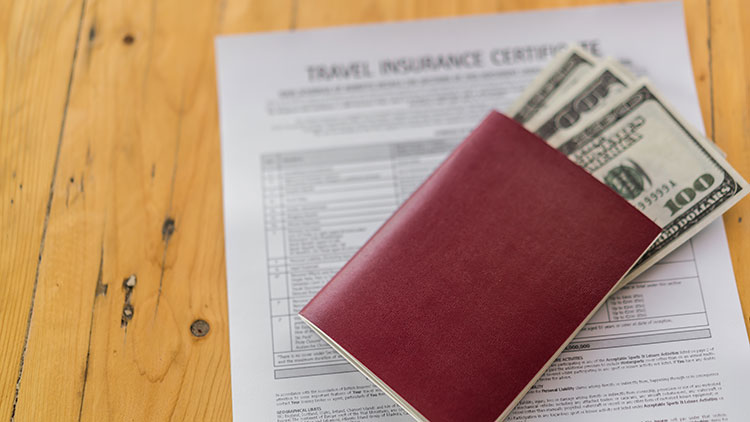
The application for the E-visa is processed online at the website of the Vietnam Immigration Department. On the website when you finish all the steps, you have to pay $25 for the application and it is non-refundable if your application is disapproved.
Processing time
Applying for a Vietnam visa upon arrival allows you to receive your visa at any international airport in Vietnam. This means you will have to get the approval letter before traveling to Vietnam. Normally, the standard processing time for an approval letter can be 1-2 hours or up to 2-7 days. This is based on the type of your visa and excludes Saturday, Sunday, and public holidays.
On the other hand, the E-Visa is processed online by the Vietnam Immigration Department. You can expect to receive the result within 3 days after finishing the online application. Please note that you can only get the result if your information and documents which you have uploaded are well-provided.
Nationalities that are eligible for VOA and E-visa
If you are not a citizen from one of the 88 countries that have agreements with Vietnam on visa exemption, you will have to apply for a visa before traveling to Vietnam. The most common way is applying for the Visa On Arrival. For the E-Visa, it has only been available since 2017, so at the moment the Vietnam Government has only allowed citizens of 80 countries to apply for one.
Destinations that except Vietnam VOA and E-visa
The visa application procedure at the Vietnam Embassies can cause you problems and annoy you very much. Most people tend to choose to apply for a visa upon arrival because it is the most common and convenient way when you do not want to apply to the embassies for Vietnam visas. But please keep in mind that only international airports allow Visa On Arrival.
If you are thinking about applying for the E-Visa, this is the list of ports that you are allowed to enter and exit Vietnam with this visa. For your information, these are the 5 biggest ports in Vietnam:
- Tan Son Nhat International Airport (Ho Chi Minh City);
- Noi Bai International Airport (Ha Noi Capital);
- Mong Cai Landport (Quang Ninh Province);
- Lao Bao Landport (Quang Tri Province);
- Vung Tau Seaport.
Requirements
In order to get a visa upon arrival at one of Vietnam’s international airports, you have to obtain an approval letter in advance. Along with the approval letter, you need to have the following documents to submit when arriving at the airport:
- A passport with remaining validity for at least 6 months;
- Two 2×2 inches or 4×6 cm (passport-sized) photos.
For the E-Visa, you will get the visa result online in just a couple of days. You do not need to bring anything but your passport in addition to the E-Visa printout when traveling to Vietnam. But before starting the registration on the website, you have to prepare the following documents:
- A scanned photo of the valid passport (6 months of validity remaining) data page;
- A scanned photo of a passport photo (2×2 inches or 4×6 cm, white background, no glasses, and straight face).
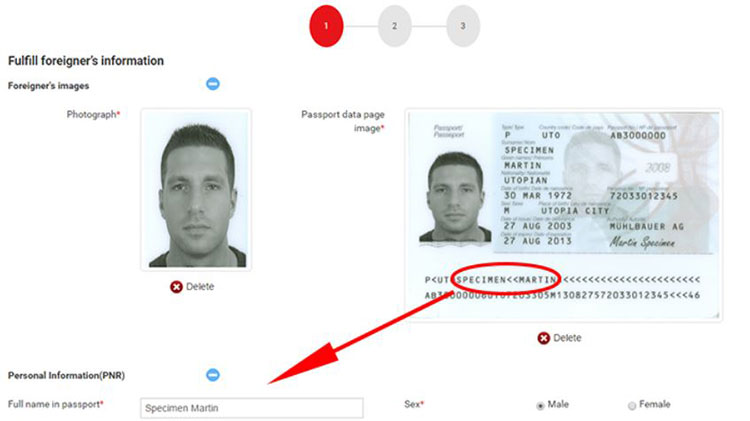
Comparing the advantages of Visa On Arrival to E-Visa
Before getting into the comparison between VOA and E-visa regarding their advantages, you should be aware of some details when applying for E-Visa that are:
- The procedure is online with easy instructions.
- You only have to pay a one-time fee.
- The process takes only 3 days.
Most of the steps of applying for Visa on Arrival will be processed online. At Visa2Asia, there are three simple steps: register online applications, make the payment, and get the approval letter via email. This seems like you have to depend on an agency but in comparison with applying for E-Visa on your own, getting help from the travel agency means you will be having a team with a deep understanding of local law, culture, customs, and English fluency to get you through all hassle formal procedure.
Although applying for E-Visa only costs you a one-time payment and you will get the visa a few days later, please remember that the fee is non-refundable if your application is disapproved. Of course, choosing the Visa On Arrival service from an agency will need you to pay a service fee but local expertise means lower rejection. It will be worth the money because you can obtain the approval letter with just one application.
About the processing time of the E-Visa, it normally only takes you 3 days after your registration to get the visa. This means no matter what your purpose is, the time to process your application is still within 3 days. It would seem that the E-Visa application is fast and convenient. To some people who sometimes need the last-minute document process to get on the flight immediately or in a couple of days, the Visa On Arrival service is a better choice. You can receive the approval letter within just 4 – 8 working hours. Visa2Asia can help you with urgent visas. This is the life-saver for last-minute trips with visas issued within a few hours.
Furthermore, if you choose the Visa On Arrival at Visa2Asia, you do not have to send off your passport during the processing time. You can reach out easily to the dedicated support of Visa2Asia when you need more information.
Comparing the disadvantages of Visa On Arrival to E-Visa
There are some annoying situations that you may have to face when getting your passport stamped with the Visa On Arrival:
- You have to wait in a line crowded with people whose intentions are the same as yours at the destination airport.
- The applicant’s name stated on the approval letter which you have had in advance may be the name of the representative from the travel agency instead of yours.
Compared with the above disadvantages of Visa On Arrival, registering the E-Visa on your own can be much more difficult if it is your first time. There is a high chance that you will misunderstand the requirements or upload the wrong information, etc. After finishing the registration, if there is just one false information, you will waste the money because as mentioned before, the E-Visa application fee is non-refundable.
Additionally, to apply for a Vietnam E-Visa, you have to register with the right website of the Vietnam Immigration Department. With a fraud website, there is a high chance that you will get phishing. Your important data like the bank account information will be stolen. You can look for the E-Visa service from agencies to process on your behalf but remember to put your trust in trustworthy agencies or organizations.

It is flexible when it comes to choosing the type of entry of your VOA, regardless of your purpose. For your information, the variety of types of entry is only available for visa applying at Vietnam Embassies and Visa On Arrival. Choosing E-Visa only leaves you one option that is a single entry in 30 days.
Conclusion
This article does not specifically point out which visa application option is better than the other one. It all depends on your purpose of traveling. But please take the information about the type of entry (single entry in 1 month), validity (30 days), and allowed nationalities (80 countries) of the E-Visa application for your consideration.
On the other hand, if you are in a hurry and cannot wait a few days to get the visa, look for Visa On Arrival service at Visa2Asia. We can help you save tons of time. All you need to do is to fill in our online form. Visa2asia is confident in providing reliable and transparent visa services. Talk to us now!


